Watch: What to Know About Jewelry Appraisals
Plus, appraisal expert Mark Cartwright answers the audience questions we missed during the webinar.
In the latest episode of “My Next Question,” experts Gail Brett Levine and Mark T. Cartwright joined Associate Editor Lenore Fedow to shed some light on the world of appraisals.
From how often jewelry should be appraised to the average cost of an appraisal, Levine and Cartwright shared their decades of expertise.
Watch the full session above and join us again for “My Next Question” this coming Tuesday, July 6 at 2 p.m. EDT.
Senior Editor Brecken Branstrator will sit down with Jewelers of America President David Bonaparte to talk about its upcoming National Convention, Gem Awards, and everything else on the trade organization’s schedule this summer. Register at NationalJeweler.com/webinars.
For more on appraisals, Cartwright shared answers to questions we couldn't get to during this week's webinar below.
Q: What are your tips for starting your own appraisal company?
Mark Cartwright: It's like starting any other small business. You need to create an honest, workable business plan that identifies your market, your competition, your finances going forward, etc.
Be prepared to not take home a significant amount of money, initially, since it will take more time than you probably think to develop relationships and market share. But, if it's what you love, it's all worth it. It can get expensive though! And there's help out there with SCORE, the Small Business Administration, etc. to help people starting businesses develop a plan and follow through with it.
Q: Do you have any advice for valuing items for fair market for resale?
MC: First, fair market value may not be the appropriate type and definition of value for that intended use. You need to understand what market level the client intends to try to sell the items into, and you need to recognize and understand the value characteristics, positive and negative, of the items to be able to understand how the client's intended market will see the pieces. Outdated, used jewelry often has a very limited market appeal.
When you do the research, you should explore enough types of markets to find out where items like that most commonly sell. The main difference being that you need to find out from the client how they intend to sell and where they believe they're going to find an audience. After you've done the research, you may have other advice for the client.
Secondly, the critical distinction to make is whether an actual appraisal will serve their interest or whether simply finding cash offers from within the jewelry trade is more appropriate for the client's goals and their items.
I've found that, the majority of the time, the client has no idea how to answer any of those questions, but, as an appraiser with familiarity with the markets in which used jewelry is sold, you may be able to suggest that outdated jewelry in fair condition is most appropriately valued on the basis of the gold and stones at liquidation market levels.
Nobody likes to hear that their treasured heirloom is outdated and worth the break-out value of materials, but, sometimes that's the reality and they come to us as professional valuers for honest answers.
Q: What is a recommended pricing structure for appraisals on items not purchased from your store?
MC: I suspect that only you can answer that question. It's about time and return on your investment in that time.
Typically, jewelry stores don't actually provide "appraisals" within the definition of the term in USPAP. The valuation service most stores provide is really more of an "estimate to replace in our store" rather than an unbiased, independent opinion based on market analysis that includes their store as just one datapoint in the information needed to provide an opinion of value.
If you're going to pull your most high-value employee off the sales floor to provide that service, I'd probably consider not just their direct costs (salary, etc.) but the potential loss of other income by not having them selling inventory during the time they're doing the valuation. Only you can do that math.
Q: Why don’t appraisers have government regulation/certification or licensing as they do for hairdressers?
MC: That's a hotly debated question and has been for years. There are a lot of factors [to consider], such as lobbying against it by jewelry industry groups who don't want to regulate any part of their business. It probably also has to do with the government expense to set up and maintain the infrastructure necessary.
It may also have to do with a general distaste by many people for any government regulation of free enterprise, and part of it probably has to do with the minimal, in the grand scheme of things, financial risk to consumers and the belief that the legal system will and can weed out the bad appraisers. And hey, a bad appraisal is not a good thing, but a bad haircut? That can be devastating!
Q: If the consumer wants to sell the pieces to other individuals, which do you recommend: insurance value appraisal or estate appraisal?
MC: Neither. How pieces are valued for resale depends on the specific pieces, how the client intends to sell, and how quickly they hope to sell.
Most of the time I find that "marketable cash value" based on actual cash offers from reputable dealers who are knowledgeable in the type of pieces and have the money to pay for them (not consignment) will give the client the most realistic information about how much their used jewelry is "worth" in the resale market.
If they intend to sell the pieces themselves to an individual, marketable cash value provides them with a realistic view of the least amount they can sell for. An alternative is "market value for resale" and would usually be based on research of either sold pieces at auction (recently completed sales) or possibly offers to sell by used jewelry retailers that typically carry that kind of jewelry.
Don't get stuck with the idea that the appraisal or appraisal report has to fit into a neat appraisal-type box. We're there to answer the client's value questions and sometimes that doesn't fit into a nice, tidy little pre-packaged box with a convenient label.
Q: What is the future of the appraisal industry?
MC: I think there will be some major changes coming for the jewelry appraisal industry within the next three to five years as far as education is concerned.
I don't think there will be any significant push for regulation from a federal or state standpoint, but I suspect that as insurers and other stakeholders begin to recognize the impact on their financial bottom lines caused by bad jewelry and personal property appraisals that they will begin expecting more education and compliance with recognized standards like USPAP.
If that happens, other industry players may enter the appraisal education scene. We already see some insurers trying to partner with appraisal software providers to try to make the process easier for the insurer, not better for the appraisal client, however.
My experience with most of the pre-packaged appraisal software offered through insurers has indicated that there are significant limitations and potentially serious legal and ethical issues that remain to be resolved, but they're new to the game and things might get better eventually.
The Latest

At the 2025 World Series, the Los Angeles Dodgers’ Yoshinobu Yamamoto sported a custom necklace made by California retailer Happy Jewelers.

The brand’s seventh location combines Foundrae’s symbolic vocabulary with motifs from Florida’s natural surroundings.

The retailer also shared an update on the impact of tariffs on watch customers.

From educational programs, advocacy, and recent MJSA affiliation, Jewelers of America drives progress that elevates businesses of all sizes.
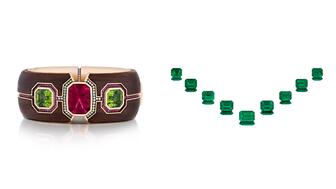
Pink and purple stones were popular in the AGTA’s design competition this year, as were cameos and ocean themes.

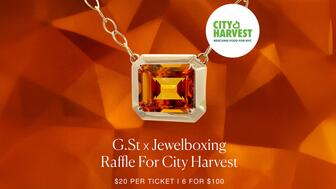
All proceeds from the G. St x Jewel Boxing raffle will go to City Harvest, which works to end hunger in New York City.

Courtney Cornell is part of the third generation to lead the Rochester, New York-based jeweler.

De Beers also announced more changes in its upper ranks ahead of parent company Anglo American’s pending sale of the company.

Former Signet CEO Mark Light will remain president of Shinola until a replacement for Ulrich Wohn is found.

Kindred Lubeck of Artifex has three rings she designed with Anup Jogani in Sotheby’s upcoming Gem Drop sale.

The company focused on marketing in the third quarter and introduced two new charm collections, “Pandora Talisman” and “Pandora Minis.”
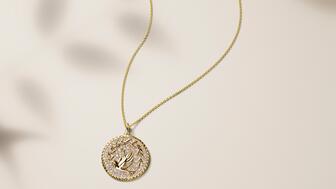
The jewelry retailer raised its full-year guidance, with CFO Jeff Kuo describing the company as “very well positioned” for the holidays.

Ahead of the hearing, two industry organizations co-signed an amicus brief urging the court to declare Trump’s tariffs unlawful.

Stuller COO Belit Myers will take on the additional role of president, with all changes effective at the start of 2026.

Smith cautions retailers against expending too much energy on things they can’t control, like the rising price of gold.
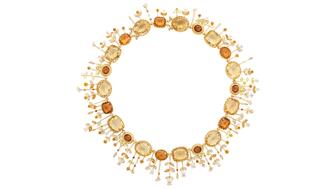
Citrine and topaz are birthstones fit for fall as the leaves change color and the holiday season approaches.

The family-owned jeweler will open its fourth store in Florida in late 2027.

The NYPD is looking for three men who stole a safe and jewelry valued at $3.2 million from the home of a jeweler in Jamaica Hills, Queens.
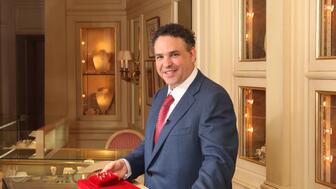
The trade organization also announced its executive committee and five new directors.

The “Have a Heart x Diamonds Do Good” collection is championed by model and humanitarian Flaviana Matata and will benefit her foundation.
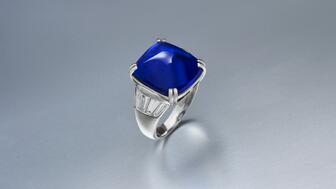
The ring, set with a nearly 17-carat Kashmir cabochon sapphire, sold for $1 million.

This “Mother Father” spinner necklace from Heavenly Vices Fine Jewelry draws inspiration from Victorian Era jewelry.
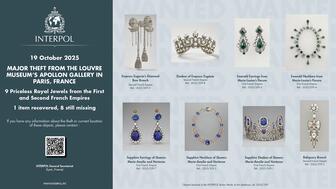
The suspects were rounded up in Paris and its suburbs on Wednesday night, but none of the stolen jewels were recovered with them.

Sponsored by the Gemological Institute of America
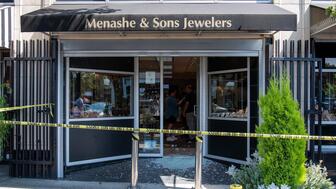
The suspect faces charges in the August robbery of Menashe & Sons Jewelers and is accused of committing smash and grabs at two pawn shops.

The “Lumière Fine” collection was born from designer Alison Chemla’s interest in the transformative power of light.
























